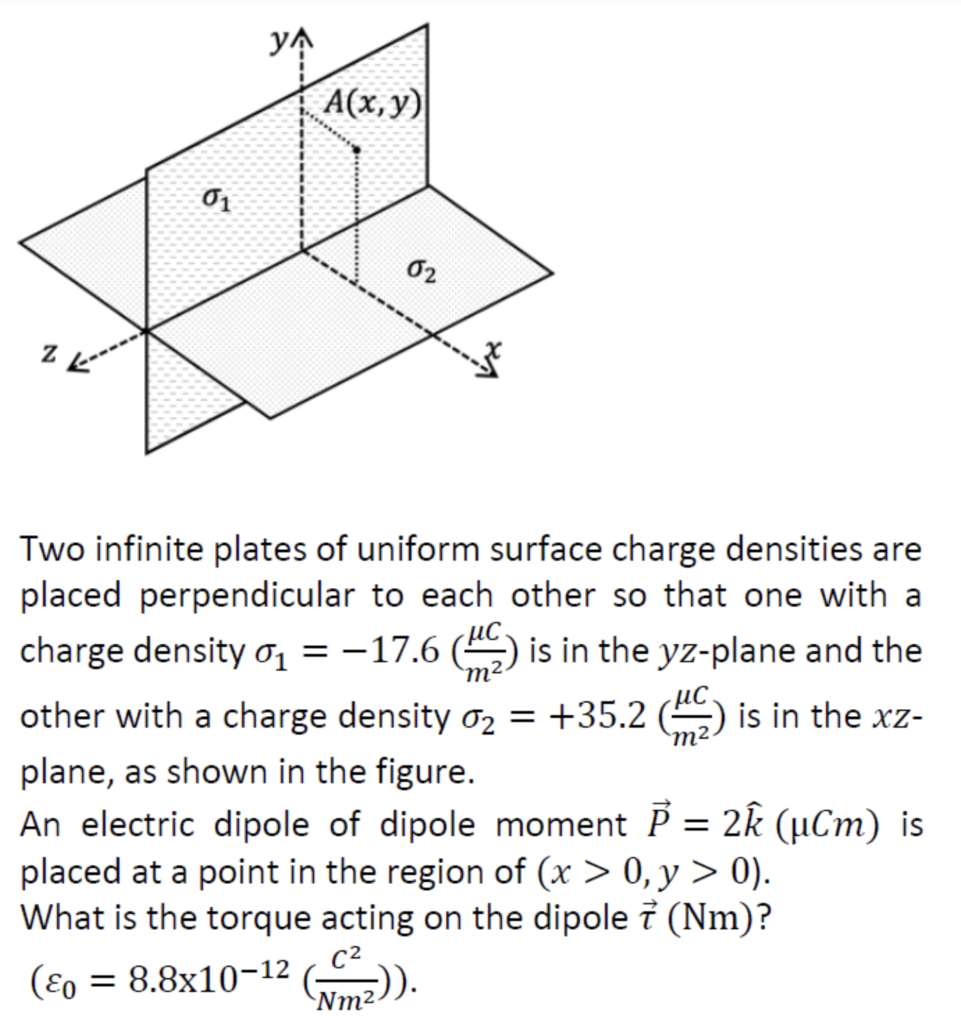Two infinite plates of uniform surface charge densities are placed perpendicular to each other so that one with a charge density σ1 = −17.6 (μCm2) is in the yz-plane and the other with a charge density σ2 = +35.2 (μCm2) is in the xz− plane, as shown in the figure. An electric dipole of dipole moment P→ = 2 k^(μCm) is placed at a point in the region of (x>0, y>0). What is the torque acting on the dipole τ→(Nm) ? (ε0 = 8.8×10−12(C2 Nm2)).
